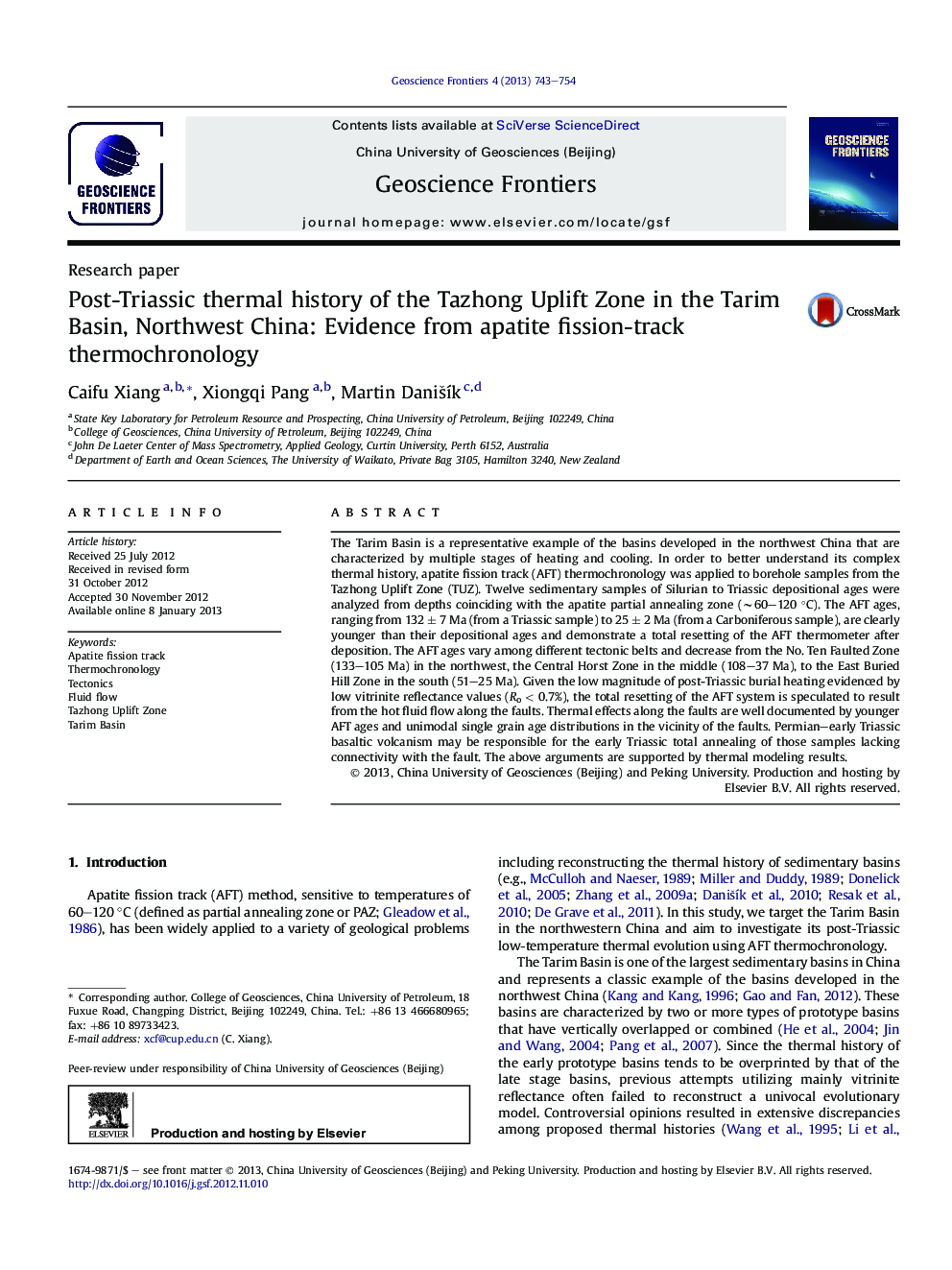| Article ID | Journal | Published Year | Pages | File Type |
|---|---|---|---|---|
| 4681655 | Geoscience Frontiers | 2013 | 12 Pages |
The Tarim Basin is a representative example of the basins developed in the northwest China that are characterized by multiple stages of heating and cooling. In order to better understand its complex thermal history, apatite fission track (AFT) thermochronology was applied to borehole samples from the Tazhong Uplift Zone (TUZ). Twelve sedimentary samples of Silurian to Triassic depositional ages were analyzed from depths coinciding with the apatite partial annealing zone (∼60–120 °C). The AFT ages, ranging from 132 ± 7 Ma (from a Triassic sample) to 25 ± 2 Ma (from a Carboniferous sample), are clearly younger than their depositional ages and demonstrate a total resetting of the AFT thermometer after deposition. The AFT ages vary among different tectonic belts and decrease from the No. Ten Faulted Zone (133–105 Ma) in the northwest, the Central Horst Zone in the middle (108–37 Ma), to the East Buried Hill Zone in the south (51–25 Ma). Given the low magnitude of post-Triassic burial heating evidenced by low vitrinite reflectance values (Ro < 0.7%), the total resetting of the AFT system is speculated to result from the hot fluid flow along the faults. Thermal effects along the faults are well documented by younger AFT ages and unimodal single grain age distributions in the vicinity of the faults. Permian–early Triassic basaltic volcanism may be responsible for the early Triassic total annealing of those samples lacking connectivity with the fault. The above arguments are supported by thermal modeling results.
Graphical AbstractFigure optionsDownload full-size imageDownload as PowerPoint slideHighlights► Thermal history of the Tarim Basin is reconstructed by means of apatite fission track thermochronology. ► A localized thermal overprint by fluid flow along the faults is identified. ► Permian–Triassic is the key time for hydrocarbon generation and accumulation.
